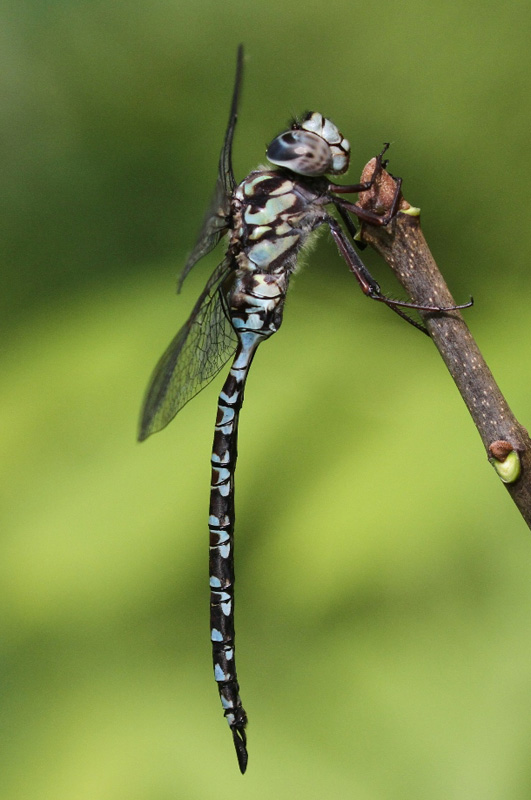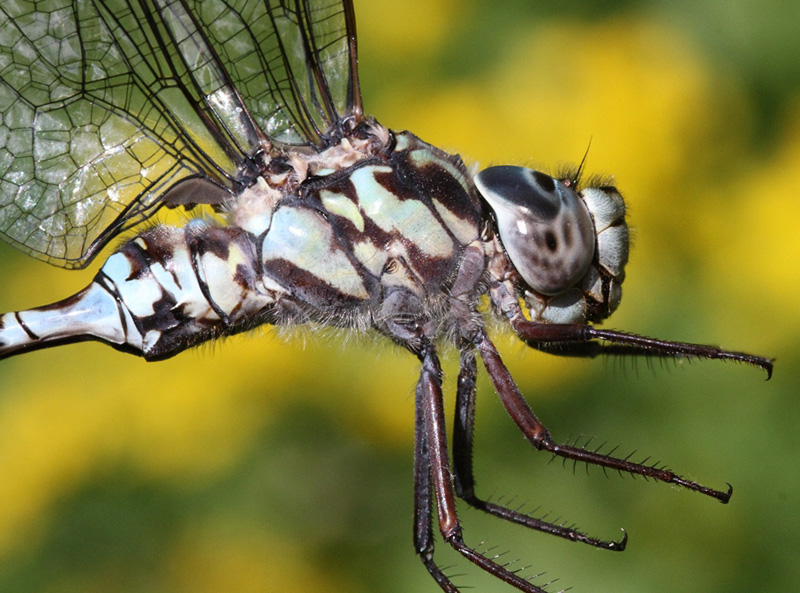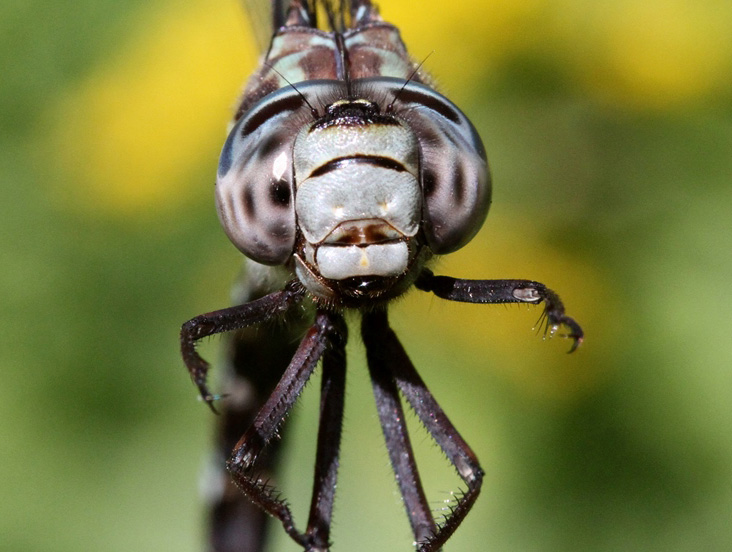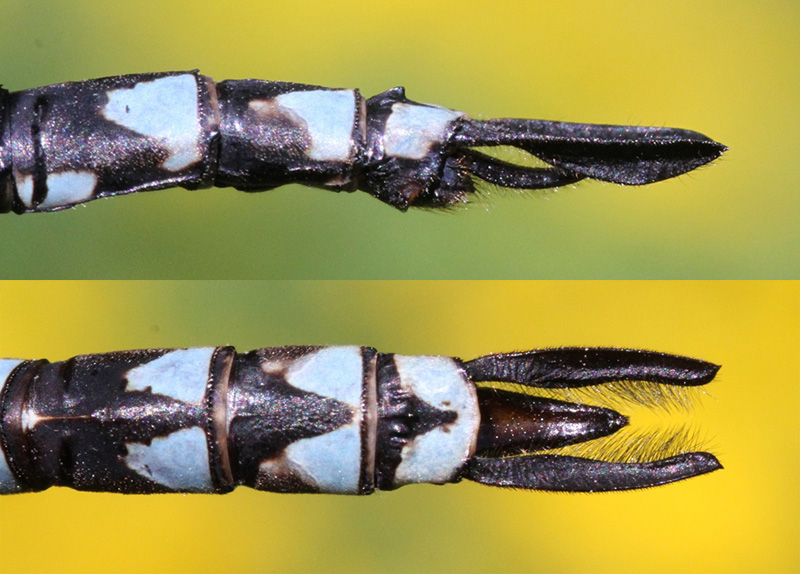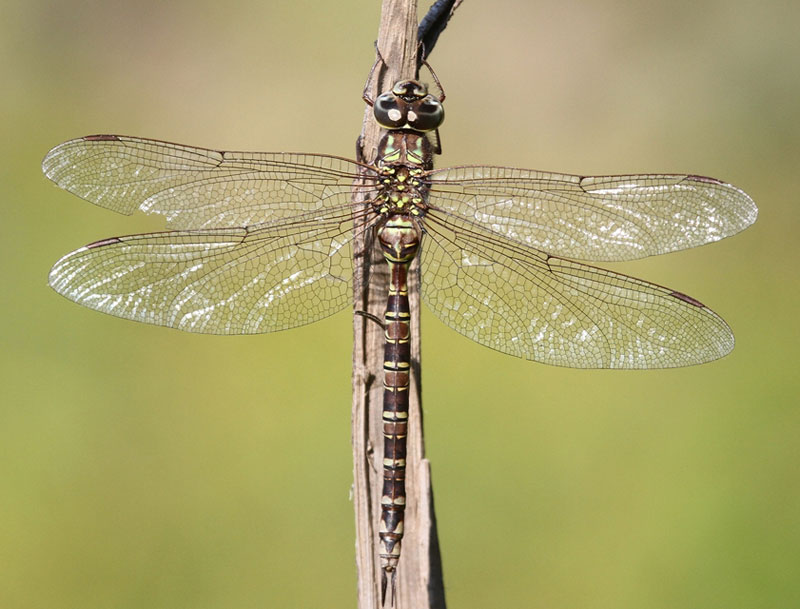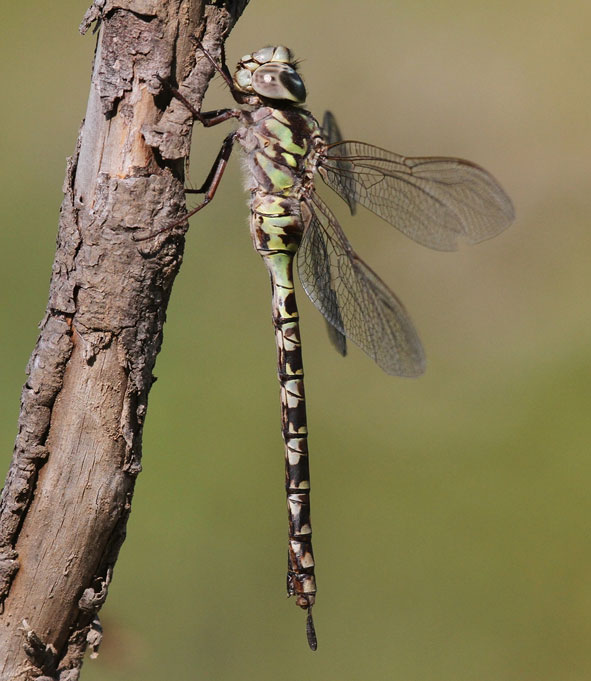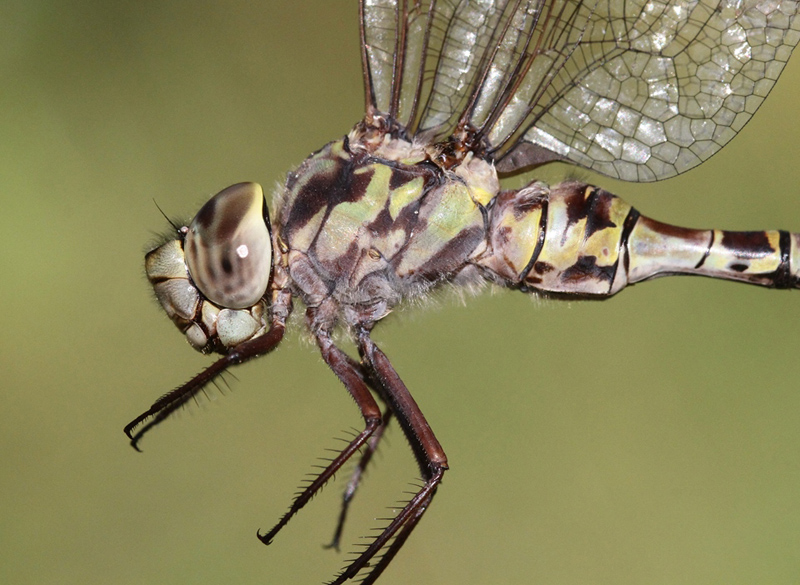




Aeshnidae, Darner Family
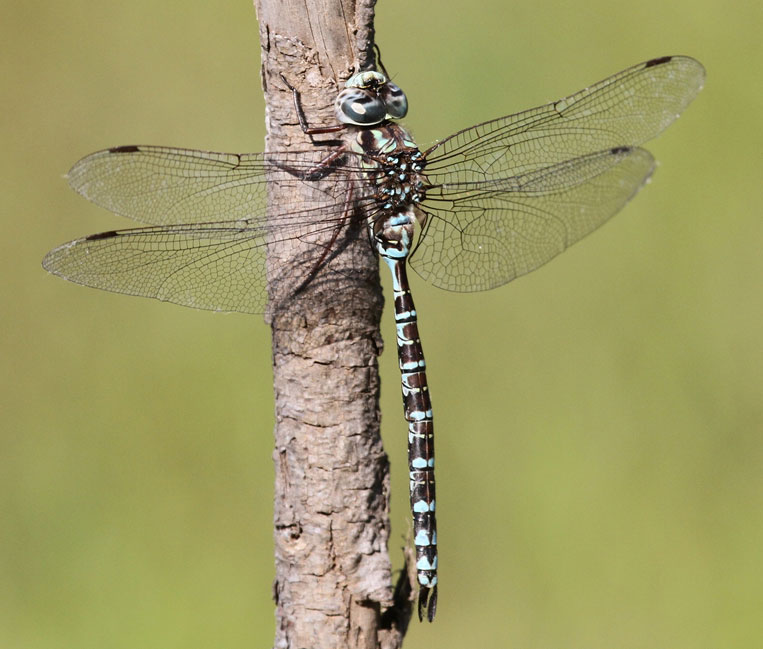
The mosaic darners of the genus Aeshna (aka blue darners) are large, strong-flying dragonflies with late-season flight periods. Most are similar to each other in size and general coloration, so in-hand examination is usually necessary to identify them. The most important distinguishing characteristics for this genus are the shapes and colors of the pale stripes on the sides of the thorax, especially the first or anterior stripes (here referred to as anterior thoracic side stripes [ATSS]), and the shapes of the cerci (upper pair of claspers) at the tip of the abdomen (whether paddle type or wedge type). Other marks that are often helpful include the presence/absence of a black line across the face, and the sizes of the pale spots on top of the abdominal segments (S), including the presence/absence of a spot on S10. Refer to the images of Aeshna species on the species pages of this website to compare shapes of thoracic side stripes and consult any dragonfly field guide for illustrations of the claspers (some guides are listed in the Resources Section).
Status-Global/State:
Distinguishing Characteristics:
Both genders have uniquely and unmistakably shaped thoracic side stripes, the first (anterior) of which are deeply incised and curved forward at the top; the posterior thoracic side stripes are very wide and there are large spots between the anterior and posterior stripes. Males have paddle-type claspers.
Description of Habitat/Range:
This species occurs throughout the northeastern United States and parts of southeastern Canada. It is generally uncommon in Wisconsin, but may be locally common at shallow bays of large lakes, marshes and bogs with open water, and small, clear lakes with emergent vegetation, usually with water lilies. Most Wisconsin records are from the northern third of the state. They will join other mosaic darners in feeding swarms over clearings at dusk.
Flight Season:
Mid-June to mid-September in Wisconsin.
(Click on photos to enlarge)
